Today we’re more connected than ever. The rapid advance of globalization has completely changed the world economy, creating increasingly interconnected trade networks and fueling the production of new services and goods. Pretty much like in many other industries, globalization has also laid its hand on transport and logistic sectors, leading to an increase in international trade with lucrative prospects for businesses to capitalize on.
As logistics and transport companies enjoy the dividends of a fruitful marketplace, it’s essential to note that globalization’s effect would not be possible at such a scale without the investment and innovation of these businesses, whose progressive thinking has shaped world commerce as we know it.
With that in mind, transport and logistics companies face unparalleled change, exciting developments bringing both challenges and opportunities. It goes without saying that advances of technologies are shaping industries all over the world, and the transport business is no exception here.
1. Next-Gen GPS Devices

GPS units are nothing new – they’ve been around for some time. One of the biggest differences we notice when comparing modern GPS to earlier models is the amount of functionality seen in the newer hardware.
As we know, old GPS devices were very limited in the past. They only calculated the total mileage and provided an estimated time of arrival to a final location – and that was about it.
Today the new GPS units are even more adaptable. Not only do they fulfill the basic functionality of planning a trip, but they can also make adjustments for extreme traffic conditions, weather, or even a preferred route.
Their accuracy has drastically improved throughout the years, not only helping lost, frustrated drivers but also improving the supply chain. Time is money for many truckers. They want to get to a destination as quickly as possible, and a GPS for trucks can ease this process calculating the shortest routes. And because delays can be costly, a truck GPS allows them to reach an endpoint efficiently and expeditiously.
Recommended for you: ECommerce Order Fulfillment: 5 Mistakes to Avoid.
2. Driver Recruiting Software

Hiring has always been a tricky business, but it’s trickier than usual when it comes to the trucking industry. The costs of acquiring new employees are high but hiring the wrong diver can also be a liability disaster. Recruiting software allows companies to find new talents fast. It saves time on intensive tasks and on-labor, creates a better experience for new employees, and helps businesses keep track of the actual cost per hire, all while helping businesses to stay on top of compliance and security issues.
The verification process can be an essential step in selecting talented drivers, however, if it’s not done fast enough, it can actually cause businesses to lose some of the best employees. Transporters can spend a considerable amount of time, filling, faxing, and even calling other transporters during this process. But driving systems contain an exchange network that will relieve some of this burden, save time and even provide save platforms for requesting and providing verifications.
Not only that but many trucking company websites rely on a job application process that somehow isn’t counterintuitive or optimized enough for drivers. And that’s where a driver recruiting software intervenes.
According to AvatarFleet, “driver recruiting software helps manage candidates, track potential leads, automate new hire paperwork, and run digital recruiting campaigns in just a few minutes. And that’s the gits of an effective recruiting process. Making the application process comfortable, fast, and easy without affecting the quality of the information.”
3. Self-driving Trucks and Drones
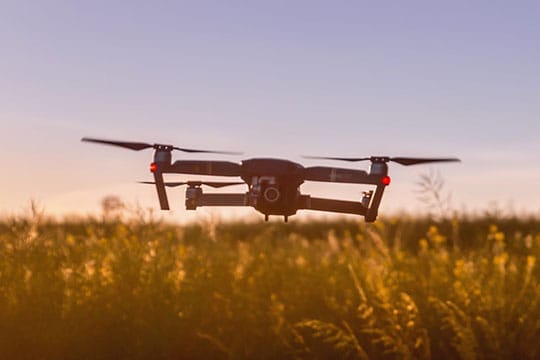
A world where an AI is able to get you from one point to another or you receive a collet from a flying crewless aerial vehicle sounds like something of a science-fiction movie but believe it or not, that’s where we’re headed. Of course, these technologies in combination with short-and long-distance radar, camera, laser detection, and 3D mapping, will sooner or later, lead to the era of the self-driving vehicle, and completely revolutionize the whole industry.
Self-driving vehicles are already a reality with trucks not far behind. Companies such as Uber have already made some experiments using self-driving trucks, with Tesla delivering a new model this year. While it wasn’t wholly self-driving, with a driver in the passenger seat monitoring the computer, this can be a huge step in the progressive technology and has a tremendous latent to improve effectiveness in the delivery course.
Self-driving trucks are fast-weaving their way into logistics operations. In an article for TechCrunch, Ryan Peterson mentioned that “The autonomous trucks are coming, it’s going to automate millions of jobs” and that “a convoy of autonomous cars recently drove across Europe arriving at the Port of Rotterdam in April 2016”.
Drones as well are not too far from improving today’s ongoing commerce industry. Recent developments in robotics, self-driving vehicles, and drones have heightened the potential of expanding the distribution networks in omnichannel retailing. It might sound like a cyberpunk movie, but some logistics companies even used drones to deliver parcels to hard to access, remote locations to make them logistically reachable. For instance, Amazon recently launched its Amazon Prime Air, a delivery platform meant to bring packaged products to customers with an aim of no more than 30 minutes using drones.
4. Automated Freight Matching
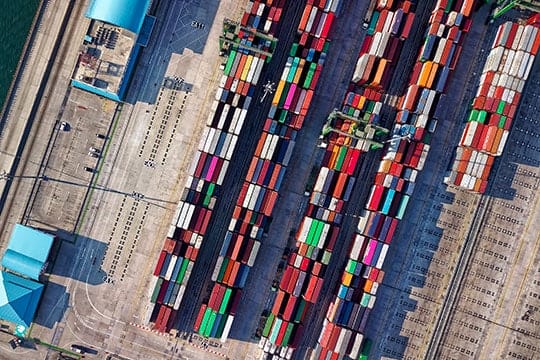
Almost 25% of the on-road vehicles are currently empty, which is one the most unfortunate market inefficiencies in the world – both in terms of pollution and in terms of costs.
Why do so many trucks travel empty? Because there is no easy way for trucks to find cargo. Trucking businesses are incredibly fragmented – once they deliver an initial load, they can easily find a load for their backhaul.
But the situation is even worse in Europe where existing regulations, language barriers, and the attempt to minimize wage rules at a national level, make it even more difficult to coordinate between trucking businesses. Fortunately, things are getting slightly better with companies that provide an objective and automated cloud-based technology solution to minimize empty running, reduce transport costs, provide environmental savings, and end-to-end visibility through their real-time matching system.
These cloud-based platforms will notify fleet management and truck drivers about potential freight-sharing opportunities and an arrangement that meets all stated measures can be automatically struck between the shipper and the truck operator.
You may like: Why You Should Use eCommerce to Scale Your Business In 2020?
5. Vehicle-to-vehicle communication
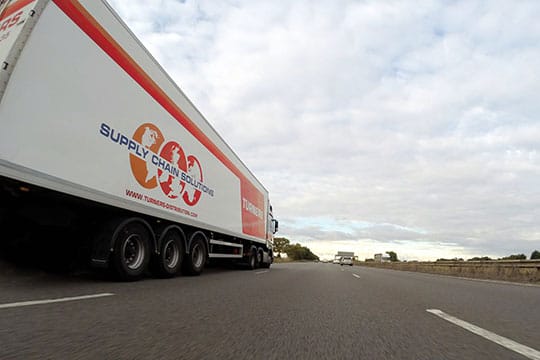
Enabling vehicles to communicate automatically with other trucks and infrastructure on the road will ultimately increase safety, thereby minimizing fatalities and dropping accident rates. Smart telematics systems linking trucks will share information regarding speed, direction, and positions, allowing for automated alerts.
That said, when integrated with advanced driving technologies such as radar, adaptive cruise control, collision avoidance systems, vehicle-to-vehicle communication will also enable vehicles to save fuel through platooning. These technologies can save up almost 10% of fuel costs for a three-truck platoon. Even though some examples of such technology are already making their way on the market, the regulatory and legal status of platooning must still be worked out before its benefits can be entirely realized.
6. Remote Diagnosis
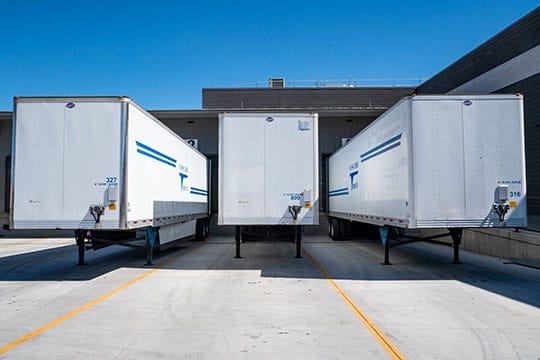
Monitoring means a lot for trucking businesses out there. By constantly monitoring the condition of the vehicle, remote diagnostics solutions will allow businesses to develop a more in-depth maintenance schedule, make more timely repairs, and considerably bring down truck downtime. It’s also predicted that technology will also offer truck producers a thorough understanding of how vehicles are used, as well as the ability to control their electronics remotely.
7. Vehicle to infrastructure communication
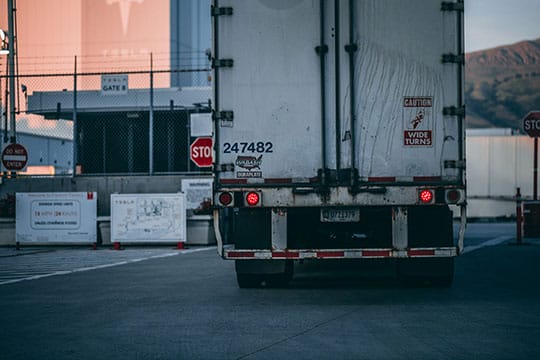
Vehicle to infrastructure communication provides truck drivers with real-time information about traffic congestion, weather, or accidents and automatically update routes. V2I will provide drivers suggestions on where to park securely depending on the driver’s level of regulatory provisions, fatigue, and the traffic situation.
Not only that, but intelligent road signs will also be able to signal certain messages, suitable to each vehicle type. For instance, when a client sends an order to a producer, the systems will immediately send back a report on the timing of shipment and the accessibility of the goods, allowing the producer to optimize its just-in-time production agenda. Once the products are available, the shipments are shipped from the warehouse along a predetermined route. When heavy traffic or an accident impedes the on-time arrival of the vehicle, the systems can automatically find a new route sending the new estimated delivery time to both the customer and the shipper.
8. The internet of Things (IoT)

Many devices operate today with built-in Wi-Fi sensors and capabilities, from ceiling fans to cell phones and eventually cars. The smooth access to Wi-Fi allows us to connect to everything. That is why we call it the internet of things. IoT brings a lot many opportunities for the supply chain, such as reducing delays and costs by avoiding risks.
In-cab sensors are connected to an alarm system or a dispatcher that is both tracking and monitoring. The information is then processed and then delivered to the crew who learns about the hidden risks. With that in mind, although the internet of things is an entirely new technology, it continues to influence the future of technology, allowing for more effective delivery of goods and in-transit visibility.
You may also like: 8 eCommerce Trends We See More of in 2020 & Beyond.
Final Words

For transport businesses today, keeping up with technology is a must. Because it is certain that it continues to push its boundaries for years to come.





